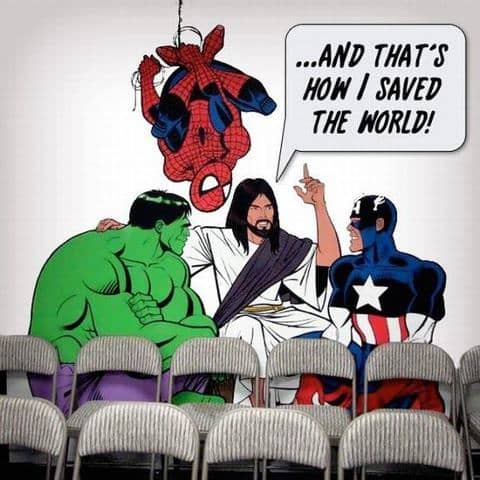This past week fanboys of
the superhero genera flocked to their local movie theaters to watch the much anticipated
Batman vs. Superman. The Dark Night
and the Man of Steel on screen at the same time battling each other and the
forces of evil is enough to send any geek into apoplexy. I’ll admit—I’m a
sucker for an epic good vs. evil showdown whether it’s in Middle Earth, Gotham
City or a galaxy far, far away.

Not long ago I watched a
documentary on the evolution of comic books in popular culture and I was
surprised to learn where the artist and writers got their inspiration for
Superman. In order to trace this development we have to go back to the 1930s,
which was a time of rampant anti-Semitism, not only in Europe but in America.
Many Jewish cartoon artists couldn’t get jobs as illustrators with major
publishers or publications, so they turned to creating comic books.
In Cleveland, Ohio, two
Jewish young men—Jerry Siegel and Joe Shuster—lived near each other and worked
side-by-side on the high school newspaper. Afterward they stayed in touch and
kept on working together on various projects. These two young men seemed to
feel that Jewish people and all around the world needed a new Moses, a figure
who could bring hope to a world that was engulfed in prejudice, slavery and an encroaching
holocaust. So they created a modern-day Moses for the comic books—Superman—who was
really he was an alien named Kal-el from the planet Krypton, sent to earth by
his father moments before his home world was destroyed. On earth, he tried to
blend in to humanity as the mild-mannered reporter Clark Kent while keeping his
developing super powers under wraps.
Like Moses, he was a man whose
own people were facing annihilation; whose parents placed him in a kind of ark
and set him adrift in an effort to save his life in infancy; who was discovered
and adopted by someone from another culture who raised him as a son; who had a
double identity; who had to keep his real heritage under cover; who had a
strong sense of justice;
who was bold on the one
hand, but on the other hand was meek and mild-mannered; who was a
self-sacrificing person, yet with access to profound power and who became a
fabled deliverer who saved people with superhuman feats of wonder.

How fascinating that Moses
is such a powerful figure in the Bible that he evidently became the inspiration
for the greatest superhero of modern science fiction. This speaks to something
in our society and of the human condition. We need a Savior from outside this
world. The hero archetype is probably one of the most powerful in the human
experience. Just look at the big budget special-effects laden movies that seem
to be coming out of Hollywood on an assembly line—The Amazing Spider Man, The
Dark Knight, The Man of Steel, Ironman, Captain America, The Avengers, and the
list goes on.
Innate to the human
condition is the knowledge that our world is broken and we are totally
incapable of fixing it, much less managing our own problems. Thus, the
superhero ideal is a dominant one—imbued with special abilities these crusaders
of good always find a way to save the day. And so, the Greeks had Hercules, The
Vikings had Thor and we have Clark Kent. Humanity longs for a Savior, so much
so, that have invented stories to live vicariously in them.

I submit to you that all
these tales of heroes are successful because they are derivative of the true
story arc that God has revealed in the Bible. Superheroes are sign posts that
point us to look deeper at the philosophical/spiritual issues. At the heart of
the Gospel message is a sinless Savior who takes up the hopeless plight of
humanity—Jesus goes up against the forces of evil, He turns back disease,
demons, death with miracles and in the ultimate act of heroism, He sacrifices
himself for humanity, only to rise again as the King of Kings and Lord of
Lords.
C.S. Lewis has written, “In
the Christian story God descends and reascends,” he writes. “He comes down;
down from the heights of absolute being into time and space, down into
humanity; further still, if embryologists are right, to recapitulate in the
womb ancient and pre-human phases of life; down to the very roots and seabed of
Nature He has created. But He goes down to come up again and bring the whole
ruined world up with Him. One has the picture of a strong man stooping lower
and lower to get himself underneath some great complicated burden. He must
stoop in order to lift, he must also disappear under the load before he
incredibly straightens his back and marches off with the whole mass swaying on
his shoulders.”[i]
No comments:
Post a Comment